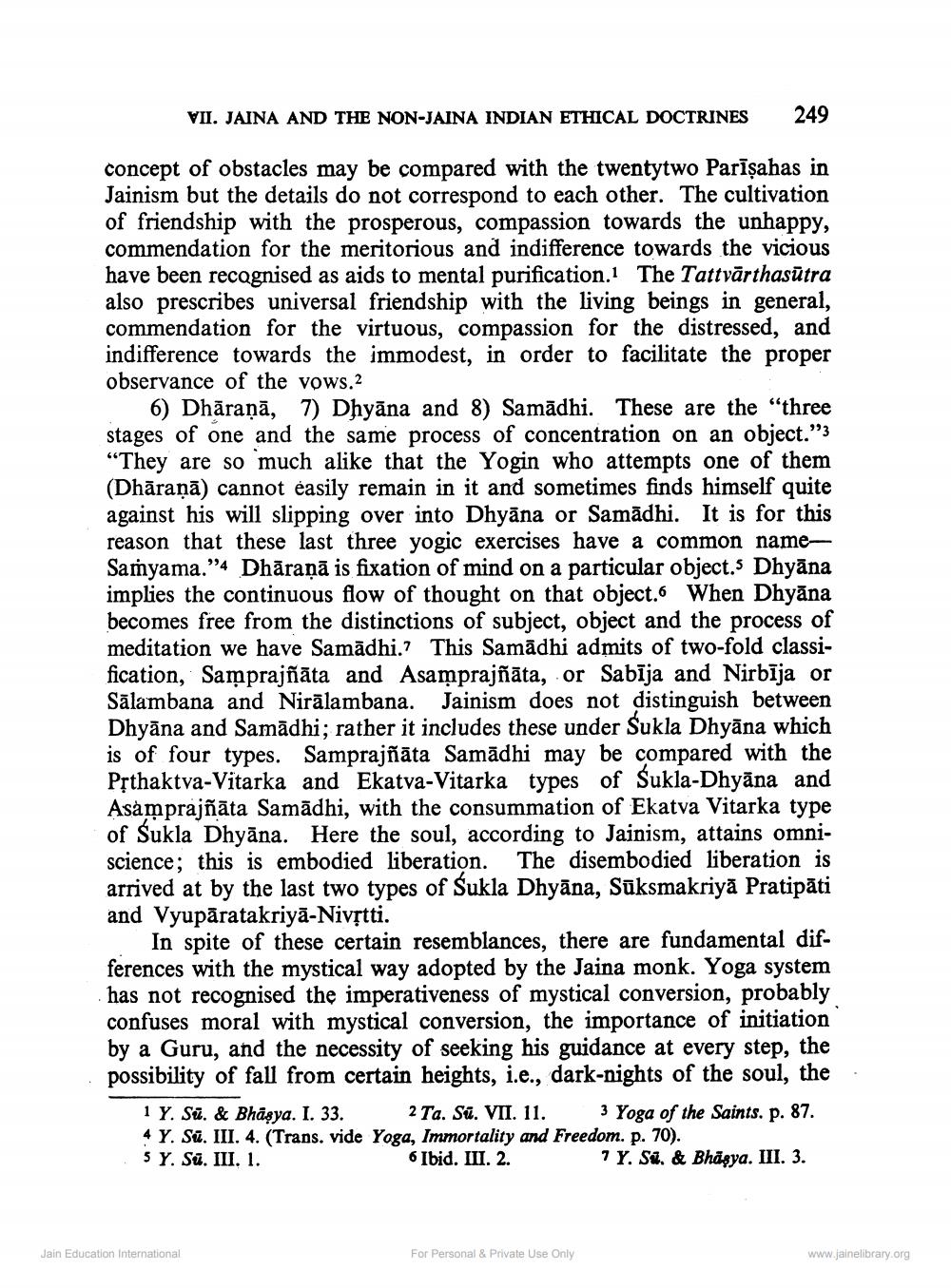________________
VII. JAINA AND THE NON-JAINA INDIAN ETHICAL DOCTRINES
249
concept of obstacles may be compared with the twentytwo Parīşahas in Jainism but the details do not correspond to each other. The cultivation of friendship with the prosperous, compassion towards the unhappy, commendation for the meritorious and indifference towards the vicious have been recognised as aids to mental purification. The Tattvārthasūtra also prescribes universal friendship with the living beings in general, commendation for the virtuous, compassion for the distressed, and indifference towards the immodest, in order to facilitate the pi observance of the vows.2
6) Dhāraṇā, 7) Dhyāna and 8) Samādhi. These are the "three stages of one and the same process of concentration on an object."3 “They are so much alike that the Yogin who attempts one of them (Dhāraņā) cannot easily remain in it and sometimes finds himself quite against his will slipping over into Dhyāna or Samādhi. It is for this reason that these last three yogic exercises have a common nameSamyama.”'4 Dhāraṇā is fixation of mind on a particular object. Dhyāna implies the continuous flow of thought on that object. When Dhyāna becomes free from the distinctions of subject, object and the process of meditation we have Samadhi.? This Samādhi admits of two-fold classification, Samprajñāta and Asamprajñāta, or Sabīja and Nirbīja or Sālambana and Nirālambana. Jainism does not distinguish between Dhyāna and Samādhi; rather it includes these under Sukla Dhyāna which is of four types. Samprajñāta Samādhi may be compared with the Pộthaktva-Vitarka and Ekatva-Vitarka types of Sukla-Dhyāna and Asamprajñāta Samādhi, with the consummation of Ekatva Vitarka type of Sukla Dhyāna. Here the soul, according to Jainism, attains omniscience; this is embodied liberation. The disembodied liberation is arrived at by the last two types of Sukla Dhyāna, Sūksmakriya Pratipāti and Vyupäratakriyā-Nivștti.
In spite of these certain resemblances, there are fundamental differences with the mystical way adopted by the Jaina monk. Yoga system has not recognised the imperativeness of mystical conversion, probably confuses moral with mystical conversion, the importance of initiation by a Guru, and the necessity of seeking his guidance at every step, the possibility of fall from certain heights, i.e., dark-nights of the soul, the
1 Y. Sü. & Bhasya. I. 33. 2 Ta. Sū. VII. 11. 3 Yoga of the Saints. p. 87. 4 Y. Sū. III. 4. (Trans. vide Yoga, Immortality and Freedom. p. 70). 5 Y. Sú. III. 1.
6 Ibid. III. 2.
7 Y. ST. & Bhasya. III. 3.
Jain Education International
For Personal & Private Use Only
www.jainelibrary.org




